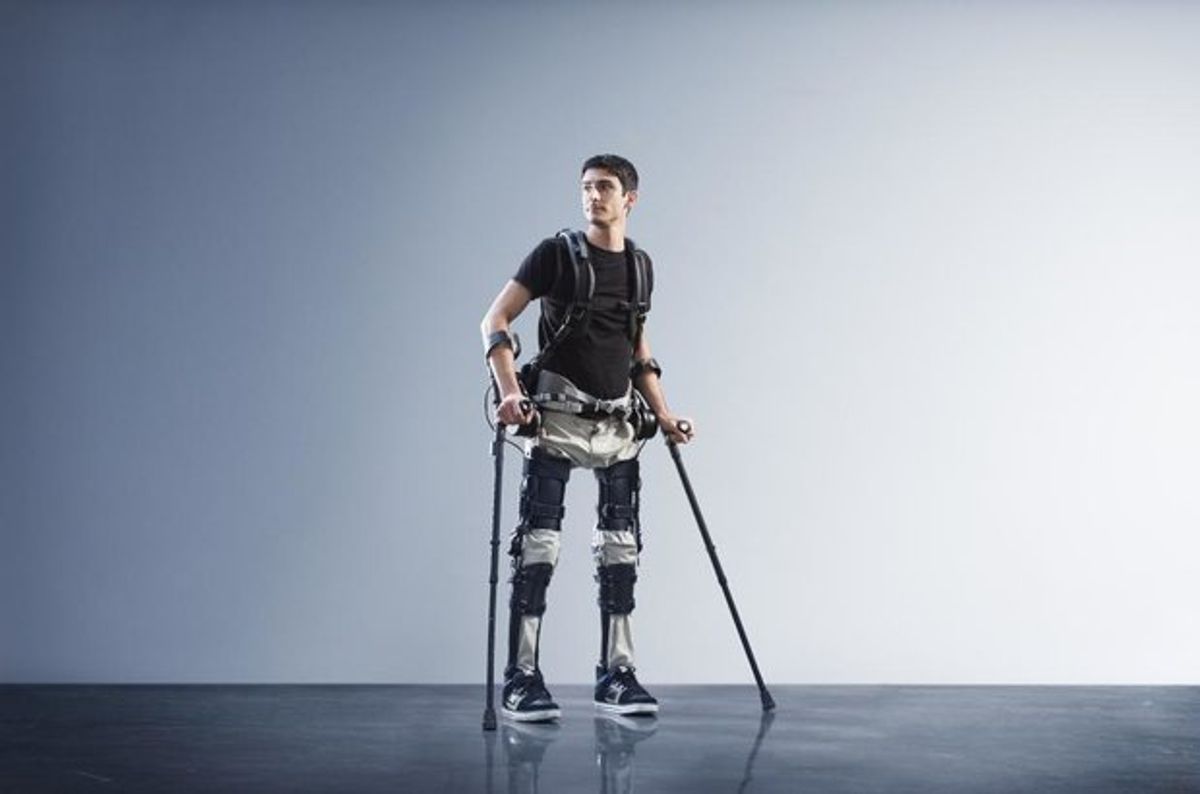In a small startup space just down the street from UC Berkeley’s campus, robotics pioneer Homayoon Kazerooni is bragging about how no-frills his invention is. “We’re trying to make the Honda,” he says, “not the sportscar.”
Kazerooni is showing me his latest robotic exoskeleton that gives paraplegics and people with mobility problems the ability to stand up from their wheelchairs and walk again. He’s been building such bionic systems for more than a decade, and back in 2005 he cofounded Ekso Bionics, the current market leader for exoskeletons. So it’s no surprise that Kazerooni says the new device from his new company, SuitX, is the most advanced yet. But in Kazerooni’s philosophy of engineering, “advanced” means “simple.”
His team could have studded the exoskeleton with many sensors and motors, but he sees that as the easy way: “If you build something and it doesn’t work, you go and add something,” Kazerooni explains. Instead, they took the hard way. “I wanted to make an exoskeleton that walks, but with no sensors in feet, no actuators at the knee, and computer this size,” he says, holding his hands about six inches apart as if holding an iPad.
Why go to such extremes? The stripped-down model Kazerooni’s team came up with, dubbed the Phoenix, costs $30,000 and weighs 12 kg. That’s why. The three competing exoskeletons on the market cost $80,000 or more, and two of them weigh more than 20 kg.
The Phoenix isn’t on the market in the United States yet; SuitX is still doing the tests required for the FDA’s approval of a medical device. And as many unhappy entrepreneurs know, the wait for FDA approval can be long and frustrating. But Kazerooni says the company’s manufacturing facility in China positions them well to enter the Asia and then European markets. He hopes to have two products ready by the end of the year—one for adults, one for children.
Kazerooni says his major engineering innovation was limiting the Phoenix’s actuators to two motors, one in each hip. Most designs also have motors in the kneees to lift and move the lower legs in natural-looking steps. The Phoenix also has only basic sensors to measure tilt, angle, and acceleration. To give the user a natural stepping gait, the hip motors do all the lifting to bring the kneee up, and a mechanism in the knee keeps it loose so the leg can swing. When the foot hits the ground, the mechanism stiffens the knee so the leg can bear the user’s weight again.
The real trick, of course, was creating software to make sure that these procedures happen at the right time, in the right way. An error could mean that the user takes a dangerous fall.
Eliza Strickland is a senior editor at IEEE Spectrum, where she covers AI, biomedical engineering, and other topics. She holds a master’s degree in journalism from Columbia University.




